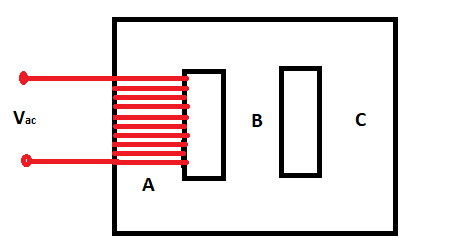
What is the inductance of the coil?
I need to determine the current I, flowing through the coil. I=V/Z. Z is impedance of the coil.
Assuming the resistance of the coil is negligible compared to its reactance. Then I=V/X. X=2*pi*f*L where pi=3.142, f=50Hz. thus I=V/(2*pi*f*L)
Now, how do I find the inductance L of this kind of parallel circuit? Please assume that the reluctance of core A is Ra, and that of B and C are equal, Rb=Rc.
The cores have same cross-sectional area.
If you know the solution, please I would appreciate your solution.
Kind Regards
